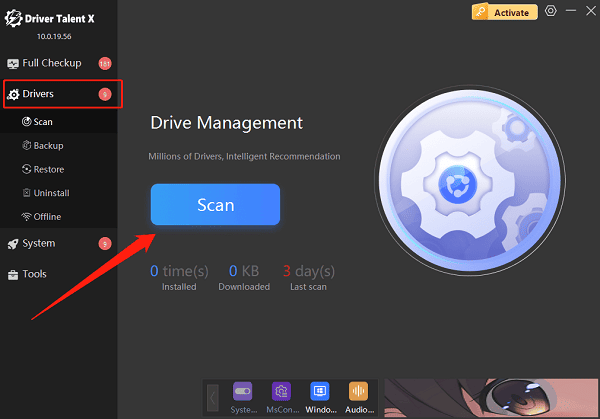When you power on your computer to install the system or start up, only to find that the SSD is not recognized in the BIOS, it can be quite frustrating. Don't worry, this article provides a complete troubleshooting and repair guide to help you identify and solve the problem step by step.
1. Common Causes of SSD Not Being Recognized
Poor SATA or power connection
Driver not installed or incompatible
Incorrect BIOS settings (such as wrong SATA mode)
Motherboard or port malfunction
SSD firmware corrupted or damaged
SSD not supported by the current motherboard (especially NVMe protocol)
2. Steps to Fix SSD Not Being Recognized
Step 1: Check Physical Connections
Make sure the SATA data cable and power cable are firmly connected. It's recommended to try another cable or port for testing.
For M.2/NVMe SSDs, confirm the SSD is correctly installed in the motherboard slot and secured with screws.

Step 2: Enter BIOS to Check Device Information
Restart your computer and press the boot key (such as Del or F2) to enter BIOS.
Check the "Boot" or "Storage" page to see if your SSD is detected.
If not detected, proceed to the next step.
Step 3: Adjust BIOS Settings
Change SATA mode to AHCI:
Go to BIOS > Storage Configuration.
Set SATA mode to "AHCI" instead of "IDE" or "RAID".
Enable NVMe support (if using an M.2 SSD):
Go to BIOS Advanced or PCIe settings page.
Ensure "NVMe Configuration" is enabled.
Step 4: Update Device Drivers
Outdated, corrupted, or incompatible drivers are common reasons why SSDs are not recognized. It's recommended to use the Driver Talent X driver management tool, which saves time and avoids risks of downloading or installing incorrect drivers.
Click the download button to get the latest Driver Talent X, install and launch the software.
Under the "Drivers" tab, select "Scan" and click the scan button. The software will automatically detect all drivers' status on your computer.

Find your motherboard drivers in the results and click the "Upgrade" button.
After updating, restart your computer to ensure the driver takes effect.
Step 5: Update BIOS Firmware
Visit your motherboard manufacturer's website and download the latest BIOS version.
Use a USB boot drive or third-party tool to perform the update.
Note: Updating BIOS carries risks. Please proceed with caution and back up important data.
3. Frequently Asked Questions (FAQ)
Q1: Does a newly purchased SSD need initialization if it's not recognized?
Yes, new SSDs require initialization and partition formatting in Windows "Disk Management".
Q2: Do all motherboards support NVMe SSDs?
No. Some older motherboards do not support the NVMe protocol. Check your motherboard manual for compatibility.
Q3: BIOS recognizes the SSD, but the system cannot be installed?
This may be due to incompatible partition table formats (e.g., GPT vs MBR). It is recommended to install the system in UEFI mode and format the drive as GPT.
By following the steps above, most issues with "SSD not recognized in BIOS" can be resolved smoothly. If none of the methods work, it's advisable to contact your SSD manufacturer or technical support for warranty or replacement service.
